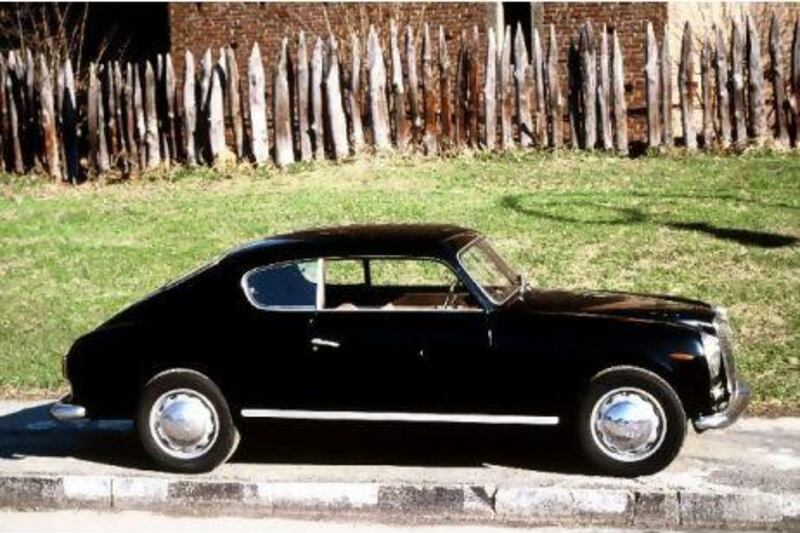Lancia's Aurelia was one of the most advanced cars of the post-war era and cemented the Italian marque's reputation for desirability, combining speed, sophistication and style. Its allure and agility were showcased in high-profile success in the historic alpine road race, the Millie Miglia, and at Le Mans, demonstrating that the engineering prowess prized by owners on the road was also the foundation for success on the track.
In the late 1950s, there was nothing more beguiling or beautiful to drive than an Italian sports car. While not as famous as Ferrari, Fiat or even Alfa Romeo, Lancia skilfully carved itself a niche in the market. It was more exclusive than a Fiat but more affordable than a Ferrari. With the Aurelia, the marque set the benchmark for sleek and sophisticated grand touring.
Before the Second World War, all but the most exclusive models tended to be squat, square and sluggish. But the market for cars was expanding year on year and the rising middle classes demanded the elegance and élan that had previously been the sole reserve of the rich. Marques like Lancia sought to meet this demand with stylish, technologically advanced cars that would be the envy of neighbours.
The Aurelia was a smooth, sleek, sporty design that was complimented by ground-breaking engineering. It was the first production car to contain a V6 engine, pioneered independent suspension and was one of the first models to feature radial tyres. It had the looks of a car for an affluent age and its technological advances made it one of the most modern on the road.
It was initially introduced as a Berlina (saloon) but, over the course of its eight-year production run, other, more desirable body styles were introduced. Along with a low-slung, stylish Spider, Lancia unveiled the fastback Grand Turismo B20. It is the GT that has become synonymous with the model and become one of the most sought-after classics of the period. It perfectly combines an aggressive, sporty image with sleek, elegant lines. The raking rear with wraparound window contrasts and yet compliments the soft, smooth lines of the grille, bonnet and headlights. Inside, the driver was pampered in leather seats and the simple yet sophisticated detailing of the dashboard and interior trim. There was nothing brash about the GT; it won admiration for its subtlety of style and peerless engineering rather than any daring design or attention-seeking details. The Aurelia was certainly no AC Cobra or Lamborghini Countach.
Lancia soon found that its cars needed more oomph to match the oohs the styling elicited. Over the course of its production, the V6 powerplant was increased from 1.8L to 2.5L, with power more than doubling from 56hp to 112hp. With the larger engine and Lancia's trademark emphasis on weight reduction, the GT could reach in excess of 160kph and sprint to 100kph in a sprightly 12 seconds. This put its performance on a par with Italian stablemates such as the Alfa Romeo Guiletta and was more than a match for rival marques such as MG.
Unlike Fiat, Lancia did not fully adopt mass production techniques. Instead, it constantly updated the design and specification throughout the lifespan of a model. This means that there are multiple variations, with latter models incorporating innovations and improvements. Examples of this are the introduction of tinted windows, another first for Lancia, and the replacement of plastic dials with upmarket Jaegar instruments, as used by Ferrari and Jaguar. But such tinkering and upgrading was very expensive and reduced the profit margin on the model. Some Lancia enthusiasts have even gone so far as to suggest that it was this quest for perfection that eventually led to the marque's demise some decades later. But it is this eye for detail that makes Lancia enthusiasts among the most loyal to their marque of any in the classic car scene.
There were just under 20,000 Aurelia's produced from 1950 to 1958, 3,700 of which were GTs. Today, their iconic charm comes at quite a premium, with concours-condition models fetching as much as Dh450,000. Always guaranteed to draw a crowd at a classic car show, the Aurelia is a rare thing indeed, an enduring sports car from the 1950s. In this way it can be seen as an inspiration to the multitude of models that made the 1960s the decade of the sports car.






